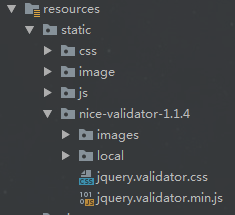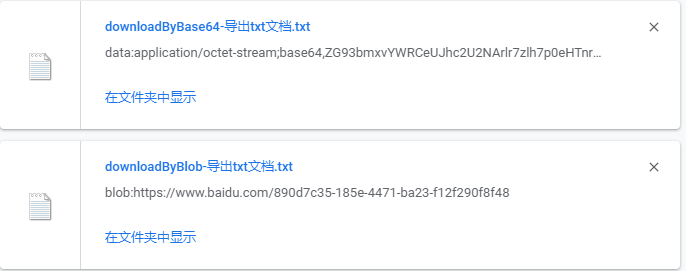在JavaScript中,有5种基本数据类型和1种复杂数据类型,基本数据类型有:Undefined,Null,Boolean,Number和String;复杂数据类型是Object,Object中还细分了很多具体的类型,比如:Array,Function,Date等等。今天我们就来探讨一下,使用什么方法判断一个出一个变量的类型。
在讲解各种方法之前,我们首先定义出几个测试变量,看看后面的方法究竟能把变量的类型解析成什么样子,以下几个变量差不多包含了我们在实际编码中常用的类型。
1. 使用typeof检测
我们平时用的最多的就是用typeof检测变量类型了。这次,我们也使用typeof检测变量的类型:
从输出的结果来看,arr,json,nul,date,reg,error 全部被检测为object类型,其他的变量能够被正确检测出来。当需要变量是否是number,string,boolean,function,undefined,json类型时,可以使用typeof进行判断。其他变量是判断不出类型的,包括null。 还有,typeof是区分不出array和json类型的。因为使用typeof这个变量时,array和json类型输出的都是object。
2. 使用instance检测
在 JavaScript 中,判断一个变量的类型尝尝会用 typeof 运算符,在使用 typeof 运算符时采用引用类型存储值会出现一个问题,无论引用的是什么类型的对象,它都返回 “object”。ECMAScript 引入了另一个 Java 运算符 instanceof 来解决这个问题。instanceof 运算符与 typeof 运算符相似,用于识别正在处理的对象的类型。与 typeof 方法不同的是,instanceof 方法要求开发者明确地确认对象为某特定类型。例如:
}
var Tom = new Person();
console.log(Tom instanceof Person); // true
我们再看看下面的例子:
}
function Student(){
}
Student.prototype = new Person();
var John = new Student();
console.log(John instanceof Student); // true
console.log(John instancdof Person); // true
instanceof还能检测出多层继承的关系。 好了,我们来使用instanceof检测上面的那些变量:
从上面的运行结果我们可以看到,num,str和bool没有检测出他的类型,但是我们使用下面的方式创建num,是可以检测出类型的:
同时,我们也要看到,und和nul是检测的Object类型,才输出的true,因为js中没有Undefined和Null的这种全局类型,他们und和nul都属于Object类型,因此输出了true。
3. 使用constructor检测
在使用instanceof检测变量类型时,我们是检测不到number,‘string',bool的类型的。因此,我们需要换一种方式来解决这个问题。 constructor本来是原型对象上的属性,指向构造函数。但是根据实例对象寻找属性的顺序,若实例对象上没有实例属性或方法时,就去原型链上寻找,因此,实例对象也是能使用constructor属性的。 我们先来输出一下num.constructor的内容,即数字类型的变量的构造函数是什么样子的:
function Number() { [native code] }
我们可以看到它指向了Number的构造函数,因此,我们可以使用num.constructor==Number来判断num是不是Number类型的,其他的变量也类似:
}
var Tom = new Person();
// undefined和null没有constructor属性
console.log(
Tom.constructor==Person,num.constructor==Number,str.constructor==String,bool.constructor==Boolean,arr.constructor==Array,json.constructor==Object,func.constructor==Function,date.constructor==Date,reg.constructor==RegExp,error.constructor==Error
);
// 所有结果均为true
从输出的结果我们可以看出,除了undefined和null,其他类型的变量均能使用constructor判断出类型。 不过使用constructor也不是保险的,因为constructor属性是可以被修改的,会导致检测出的结果不正确,例如:
}
function Student(){
}
Student.prototype = new Person();
var John = new Student();
console.log(John.constructor==Student); // false
console.log(John.constructor==Person); // true
在上面的例子中,Student原型中的constructor被修改为指向到Person,导致检测不出实例对象John真实的构造函数。 同时,使用instaceof和construcor,被判断的array必须是在当前页面声明的!比如,一个页面(父页面)有一个框架,框架中引用了一个页面(子页面),在子页面中声明了一个array,并将其赋值给父页面的一个变量,这时判断该变量,Array == object.constructor;会返回false; 原因: 1、array属于引用型数据,在传递过程中,仅仅是引用地址的传递。 2、每个页面的Array原生对象所引用的地址是不一样的,在子页面声明的array,所对应的构造函数,是子页面的Array对象;父页面来进行判断,使用的Array并不等于子页面的Array;切记,不然很难跟踪问题!
4. 使用Object.prototype.toString.call
我们先不管这个是什么,先来看看他是怎么检测变量类型的:
从输出的结果来看,Object.prototype.toString.call(变量)输出的是一个字符串,字符串里有一个数组,第一个参数是Object,第二个参数就是这个变量的类型,而且,所有变量的类型都检测出来了,我们只需要取出第二个参数即可。或者可以使用Object.prototype.toString.call(arr)=="object Array"来检测变量arr是不是数组。 我们现在再来看看ECMA里是是怎么定义Object.prototype.toString.call的:
上面的规范定义了Object.prototype.toString的行为:首先,取得对象的一个内部属性[[Class]],然后依据这个属性,返回一个类似于”[object Array]”的字符串作为结果(看过ECMA标准的应该都知道,[[]]用来表示语言内部用到的、外部不可直接访问的属性,称为“内部属性”)。利用这个方法,再配合call,我们可以取得任何对象的内部属性[[Class]],然后把类型检测转化为字符串比较,以达到我们的目的。
5. jquery中$.type的实现
在jquery中提供了一个$.type的接口,来让我们检测变量的类型:
看到输出结果,有没有一种熟悉的感觉?对,他就是上面使用Object.prototype.toString.call(变量)输出的结果的第二个参数呀。 我们这里先来对比一下上面所有方法检测出的结果,横排是使用的检测方法, 竖排是各个变量:
| ottom: rgb(216,216) 1px solid; color: rgb(85,85,85); padding-bottom: 5px; text-align: left; padding-top: 5px; padding-left: 13px; margin: 0px; border-left-style: none; padding-right: 13px">类型判断ottom: 5px; text-align: left; padding-top: 5px; padding-left: 13px; margin: 0px; border-left: rgb(216,216) 1px solid; padding-right: 13px">typeofottom: 5px; text-align: left; padding-top: 5px; border-right-style: none; padding-left: 13px; margin: 0px; border-left: rgb(216,216) 1px solid; padding-right: 13px">$.typeottom: 0px; padding-top: 0px; padding-left: 0px; margin: 0px; padding-right: 0px"> | ottom: 5px; text-align: left; padding-top: 5px; padding-left: 13px; margin: 0px; border-left-style: none; padding-right: 13px">numottom: 5px; text-align: left; padding-top: 5px; padding-left: 13px; margin: 0px; border-left-style: none; padding-right: 13px">strottom: 5px; text-align: left; padding-top: 5px; padding-left: 13px; margin: 0px; border-left-style: none; padding-right: 13px">boolottom: 5px; text-align: left; padding-top: 5px; padding-left: 13px; margin: 0px; border-left-style: none; padding-right: 13px">arrottom: 5px; text-align: left; padding-top: 5px; padding-left: 13px; margin: 0px; border-left-style: none; padding-right: 13px">jsonottom: 5px; text-align: left; padding-top: 5px; padding-left: 13px; margin: 0px; border-left-style: none; padding-right: 13px">funcottom: 5px; text-align: left; padding-top: 5px; padding-left: 13px; margin: 0px; border-left-style: none; padding-right: 13px">undottom: 5px; text-align: left; padding-top: 5px; padding-left: 13px; margin: 0px; border-left-style: none; padding-right: 13px">nulottom: 5px; text-align: left; padding-top: 5px; padding-left: 13px; margin: 0px; border-left-style: none; padding-right: 13px">dateottom: 5px; text-align: left; padding-top: 5px; padding-left: 13px; margin: 0px; border-left-style: none; padding-right: 13px">regottom: 5px; text-align: left; padding-top: 5px; padding-left: 13px; margin: 0px; border-left-style: none; padding-right: 13px">errorottom: 5px; text-align: left; padding-top: 5px; padding-left: 13px; margin: 0px; border-left-style: none; padding-right: 13px">优点输出结果ottom: 5px; text-align: left; padding-top: 5px; padding-left: 13px; margin: 0px; border-left-style: none; padding-right: 13px">缺点修改
这样对比一下,就更能看到各个方法之间的区别了,而且Object.prototype.toString.call和$type输出的结果真的很像。我们来看看jquery(2.1.2版本)内部是怎么实现$.type方法的: rush:js;">
// 实例对象是能直接使用原型链上的方法的
var class2type = {};
var toString = class2type.toString;
// 省略部分代码... type: function( obj ) { // Populate the class2type map 我们先来看看jQuery.each的这部分: rush:js;">
// Populate the class2type map
jQuery.each("Boolean Number String Function Array Date RegExp Object Error".split(" "),name) {
class2type[ "[object " + name + "]" ] = name.toLowerCase();
});
//循环之后, 再来看看type方法: rush:js;">
// type的实现
type: function( obj ) {
// 若传入的是null或undefined,则直接返回这个对象的字符串
// 即若传入的对象obj是undefined,则返回"undefined"
if ( obj == null ) {
return obj + "";
}
// Support: Android<4.0,iOS<6 (functionish RegExp)
// 低版本regExp返回function类型;高版本已修正,返回object类型
// 若使用typeof检测出的obj类型是object或function,则返回class2type的值,否则返回typeof检测的类型
return (typeof obj === "object" || typeof obj === "function") ?
(class2type[ toString.call(obj) ] || "object") :
typeof obj;
}
当typeof obj === "object" || typeof obj === "function"时,就返回class2type[ toString.call(obj)。到这儿,我们就应该明白为什么Object.prototype.toString.call和$.type那么像了吧,其实jquery中就是用Object.prototype.toString.call实现的,把'[object Boolean]'类型转成'boolean'类型并返回。若class2type存储的没有这个变量的类型,那就返回”object”。 除了”object”和”function”类型,其他的类型则使用typeof进行检测。即number,boolean类型的变量,使用typeof即可。 相关文章 |






